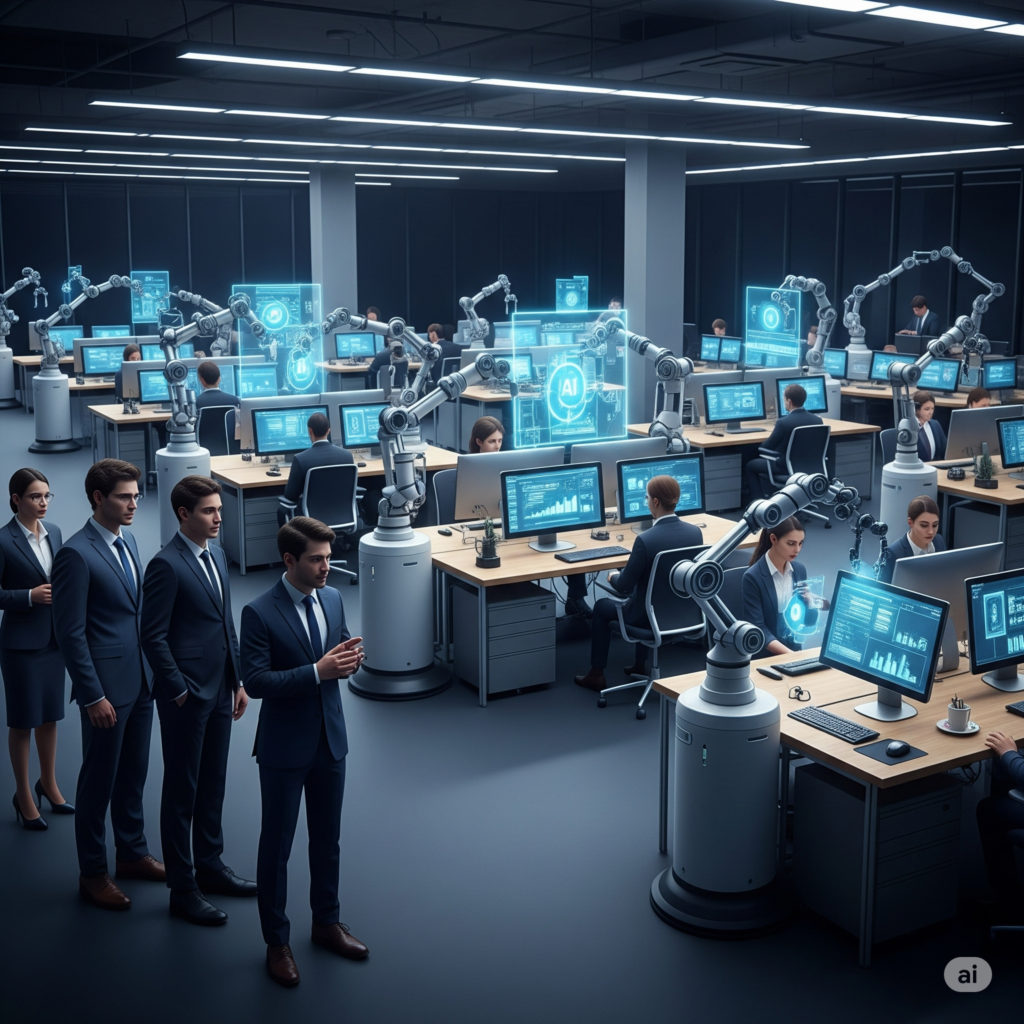📦 In-Short:
- Geoffrey Hinton, the “Godfather of AI,” warns of mass white-collar job losses.
- Rapid AI advancements are outpacing human capabilities in cognitive tasks.
- Blue-collar or physical jobs may be safer in the near term.
- Hinton calls for urgent regulation and ethical AI development.
- Future employment models must adapt to AI-driven disruptions.
🤖 A Wake-Up Call
Geoffrey Hinton, one of the pioneers of artificial intelligence and a key figure behind deep learning breakthroughs, has issued a fresh warning about AI’s impact on employment. In a recent episode of the “Diary of a CEO” podcast, Hinton expressed serious concerns that AI is moving at such a fast pace that many white-collar professions—from customer support and legal work to journalism and finance—may be replaced in the near future.
This isn’t just a speculative fear. It’s a cautionary note from a top expert whose work laid the foundation for today’s AI revolution.
💼 What Are White-Collar Jobs, and Why Are They at Risk?
White-collar jobs typically involve cognitive skills, including:
- Writing and editing (journalism, content creation)
- Legal analysis (paralegals, compliance officers)
- Financial forecasting (analysts, accountants)
- Administrative roles (clerks, HR coordinators)
- Customer service and virtual assistance
Thanks to natural language processing, generative AI, and machine learning, many of these functions can now be automated, outsourced to AI agents, or significantly augmented, reducing the need for large workforces.
⚠️ What Hinton Said: Key Quotes from the Interview
Hinton emphasized:
“I used to think that physical jobs would be the first to go. But now I believe it’s the white-collar ones that are more at risk—because AI already does many of these tasks better.”
He also warned that corporations and governments are not moving fast enough to address these risks, especially in terms of regulation and workforce retraining.
🛠️ Why Blue-Collar Jobs May Be Safer—for Now
Surprisingly, blue-collar jobs such as:
- Construction work
- Electricians and plumbers
- Healthcare aides
- Delivery and logistics
- Hospitality staff
…are currently less threatened. Why?
Because AI still struggles with physical dexterity, real-world sensory integration, and unpredictable, hands-on tasks. Robotics is advancing, but the “embodied intelligence” required to replicate human physical work is far behind software-based AI.
🌐 The Bigger Picture: What This Means for Society
Hinton’s warning is not just about jobs—it’s about a paradigm shift in how work, value, and labor are understood in an AI-driven world. The potential consequences include:
- Mass unemployment or underemployment
- A growing divide between AI-literate and AI-displaced workers
- Increased pressure on education and training systems
- Ethical questions around fairness, bias, and accountability
🧮 Data Snapshot: The Numbers Behind the Threat
- According to Goldman Sachs, approximately 300 million jobs globally can be affected by AI.
- A 2024 World Economic Forum report stated that AI adoption could eliminate 85 million jobs while creating 97 million new roles—primarily for those with advanced technical or analytical skills.
- McKinsey predicted that by 2030, 30% of work hours in the U.S. economy will be automated.
These stats echo Hinton’s concerns: the AI impact will be uneven, disruptive, and dependent on how society adapts.
🧭 The Way Forward: Can We Prepare?

✅ Upskilling is Essential
Digital literacy, prompt engineering, ethical AI knowledge, and creative problem-solving will be key skills in the future job market.
🛡️ Regulation is Urgent
There are calls for frameworks like the EU AI Act and India’s Digital India Act to be expanded to include labor protection and transparent AI deployment.
💡 Rethinking Economic Models
Discussions are underway around ideas like:
- Universal Basic Income (UBI)
- Four-day workweeks
- Job-sharing and hybrid AI-human teams
🔚 Conclusion: A Timely Warning, Not Just a Threat
Geoffrey Hinton’s words should be seen not as alarmist—but as a realistic and urgent reminder. AI holds incredible promise, but it also poses profound challenges to the modern workforce.
If governments, businesses, and workers respond proactively, the age of AI can be a new industrial revolution—but one that includes equity, ethics, and adaptability at its core.









+ There are no comments
Add yours